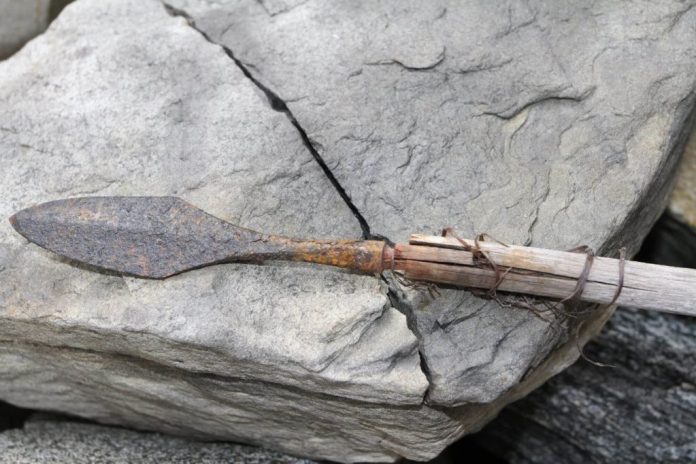Scientists have uncovered what they’re calling a “bonanza” of ancient arrows and other hunting equipment, as well as signs of prey, on a remote Norwegian ice patch. The cache is a striking example of the burgeoning field of ice patch archaeology, which is unfortunately growing as the planet melts down. Global warming is shaping the future of humanity while also revealing the distant past.
The finds are documented in a study published on Tuesday in Holocene. Researchers have been working the site, known a Langfonne, for years. The area is home to ice patches, which are stagnant swaths of ice that can cradle valuable human history in their frozen bosoms. (Glaciers, in comparison, move and are much more likely to grind their contents into oblivion.) As the patches have receded, that history is revealed. Once out of the ice patch, the ravages of the high alpine environment can quickly degrade artifacts, so researchers have been painstakingly scouring the area over multiple summers to build out their dataset and collect radar images of ice thickness.
That dataset is voluminous. The team of scientists from Norwegian and British universities and the local Innlandet County Council document 68 arrows and five arrowheads in the new paper, as well as 290 animal remains, making it the largest paleozoological discovery in the region. In a blog post about the new paper, lead researcher Lars Holger Pilø described the finds as a “bonanza” and said that the team refers to the location as the “secret arrow site.” In addition to arrows, the team also found “scaring sticks” used to drive reindeer into locations more opportune for hunters to take a shot. All the artifacts were mapped and radiocarbon dated, providing a comprehensive view of how the site was used.
The oldest artifacts date back roughly 6,000 years, which Pilø wrote is older than “finds from any other ice site in Northern Europe and about 800 years earlier than Ötzi,” referring to mummified remains of a man found in the Italian Alps. Based on the radiocarbon dating, the site appears to have been heavily used 4,000 years ago and again around 1,000 years ago.
The team also paid close attention to the present-day conditions in an effort to decipher how the site was used. On a warm day in September 2014, they saw an arrowhead move quite a bit downslope on a wave of meltwater. Despite the meltdown happening at Langfonne, the radiocarbon dating and ground-penetrating radar survey gave them confidence that the patterns of increased activity over certain periods were a sign of the site’s importance.
“The study provides the first cohesive framework for understanding how archaeological finds from the ice are impacted by natural processes, and in turn in what way we can interpret the finds,” Pilø said in an email. “Very basic stuff really, questions that have been solved a long time ago in other areas of archaeology. But then again, melting ice patches are not your regular archaeological sites. This is the first step.”
In addition to watching the ground, the scientists also observed how reindeer behaved on the site. The ice patch is still a popular summer hangout for now-domesticated reindeer, owing to the cooler temperatures and lack of flies. Seeing the reindeer move allowed researchers to refine their story of hunting at the site.
“The thing is: The reindeer do not know that they are domesticated. They behave much like reindeer did in the past,” Pilø said. “We could observe that where they entered and exited the ice, there were hunting blinds (small stone-built walls) where the ancient hunters could hide, showing the continuation of the use of the landscape.”





























